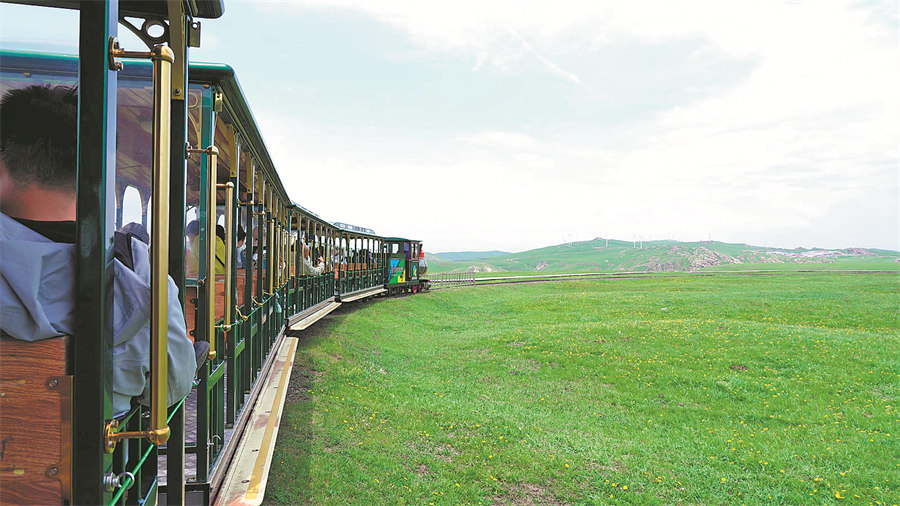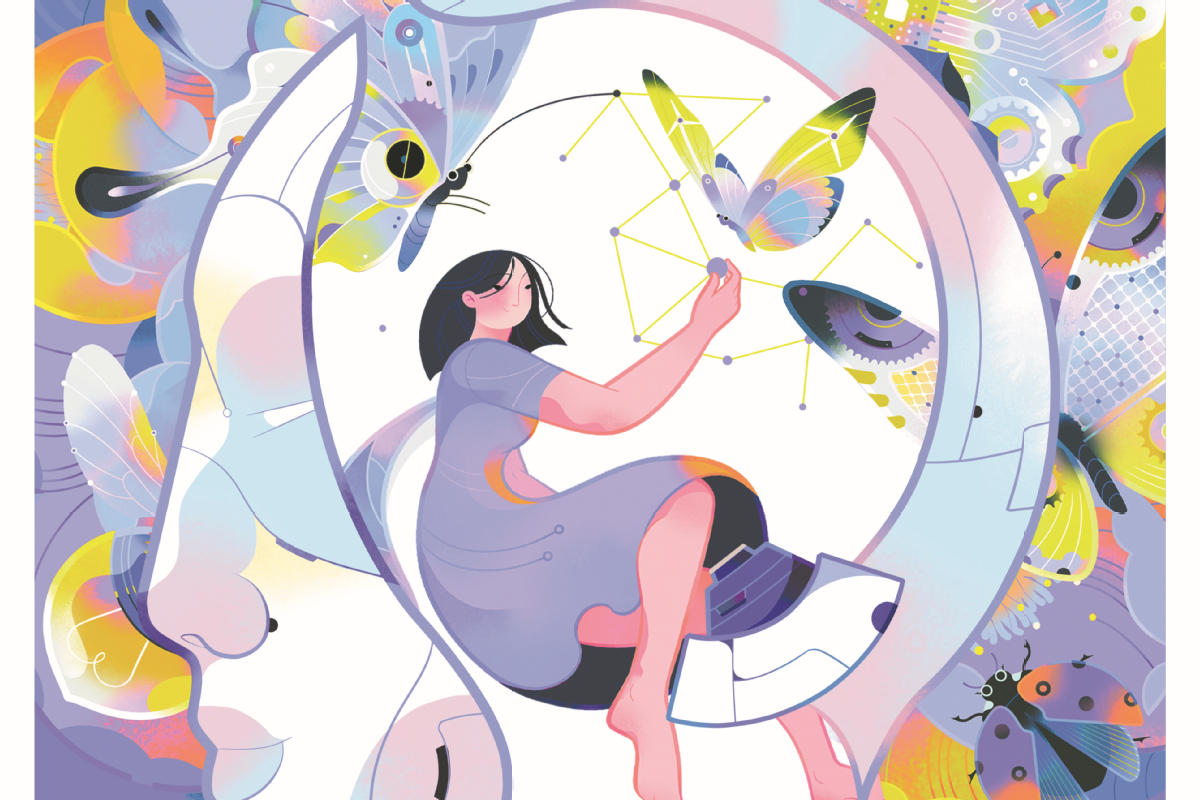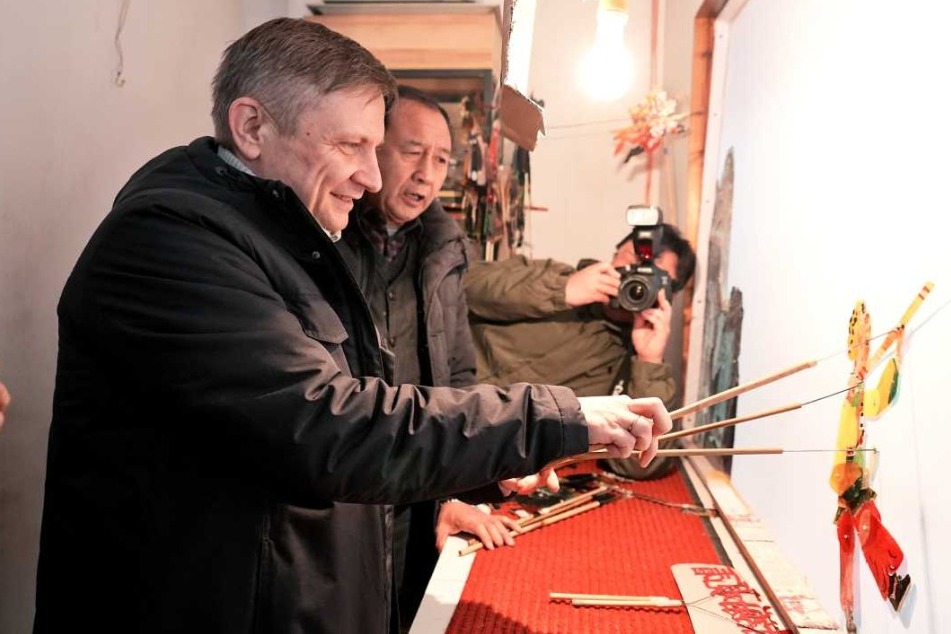Stories unfold under an azure canopy


Mongolians build ovoo — stone mounds adorned with colorful prayer flags — on mountaintops to worship, pray for harvest, or mark the road ahead.
At the summit of the Liaowangshan (Lookout Mountain) scenic area in the Xiliin Gol League, which is believed to derive its name from a tale involving Genghis Khan (1162-1227), a well-furnished ovoo has been built, dedicated to the legendary ruler. From there, rolling green hills dominate the horizon.
Liaowangshan is located alongside Route 99, a scenic highway around 120 km from Xiliinhot, a major city of the league. Route 99 and the adjacent highways are a paradise for roadtrippers.
Motorcycles and cars stream in from all over the country. Some groups, like one flying the flag "Two wheels, one family", bond over the shared love of travel. Along the route, a rare birch forest invites picnics and exploration. A newly opened 1.3-km "musical road" plays tunes as cars pass, adding a playful touch.
Of course, no visit is complete without sampling the local flavors. While debates rage over where Inner Mongolia's best lamb is found and how it should be cooked, Hohhot proudly champions its own specialty: shaomai, also known as shumai. These delicate, flower-shaped buns — steamed or pan-fried with thin crystal wrappers and savory mutton filling — are often eaten with brick tea.
Local shaomai are typically sold by the weight of the wrapper. Normally, 50 grams of dough can produce eight shaomai with fillings nearly five times the amount.
This traditional Hohhot breakfast has given rise to a bustling downtown street with dozens of shaomai restaurants.
Wang Zhiqiang, secretary-general of Inner Mongolia's shaomai industry association, said in a recent interview with Hohhot Daily that the wrappers are made from Bayannuur wheat, the lamb comes from Xiliin Gol, and the leeks from Tumd Left Banner. It's a regional symphony of flavors and an apt metaphor for Inner Mongolia's diverse and interwoven cultural landscape.
























